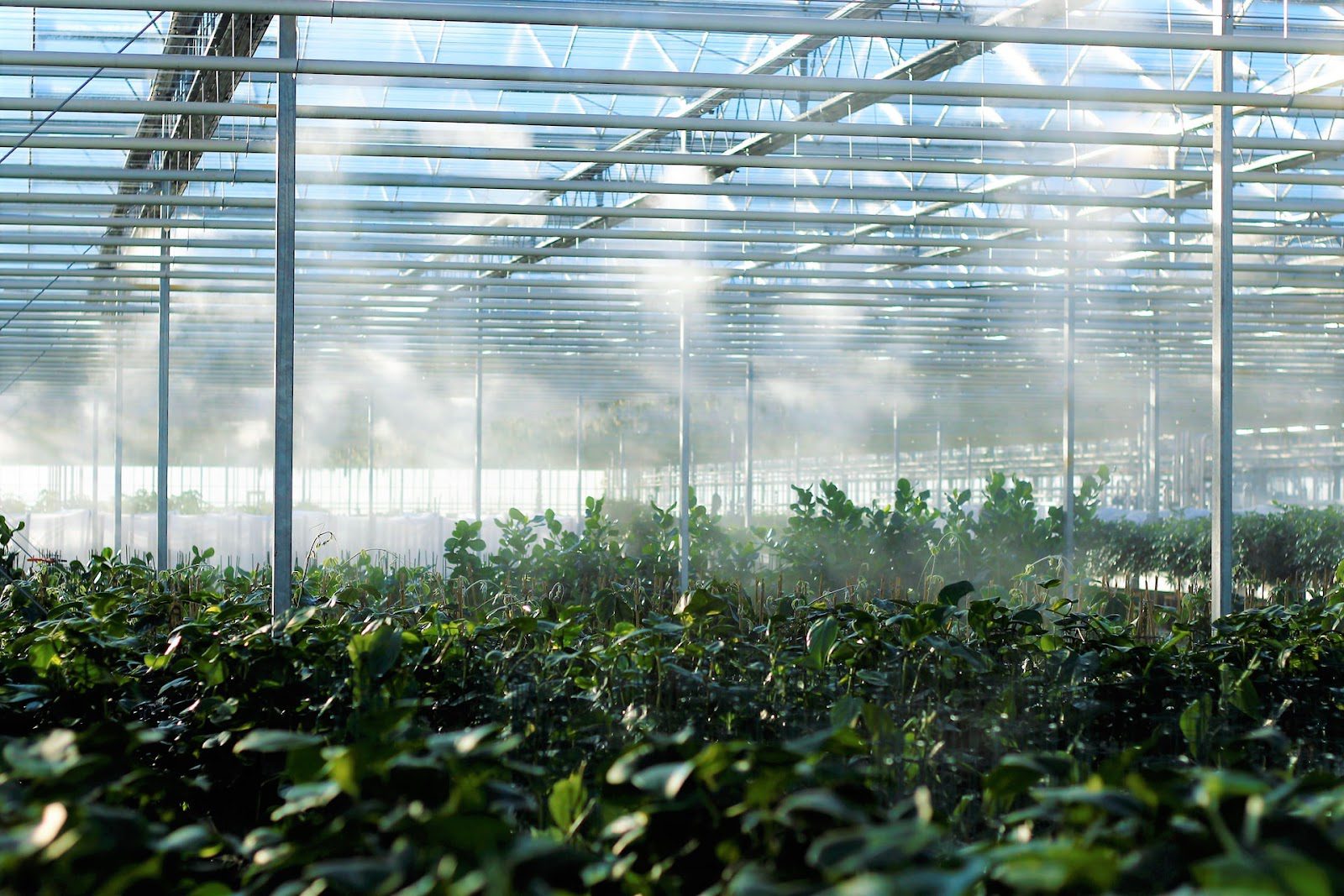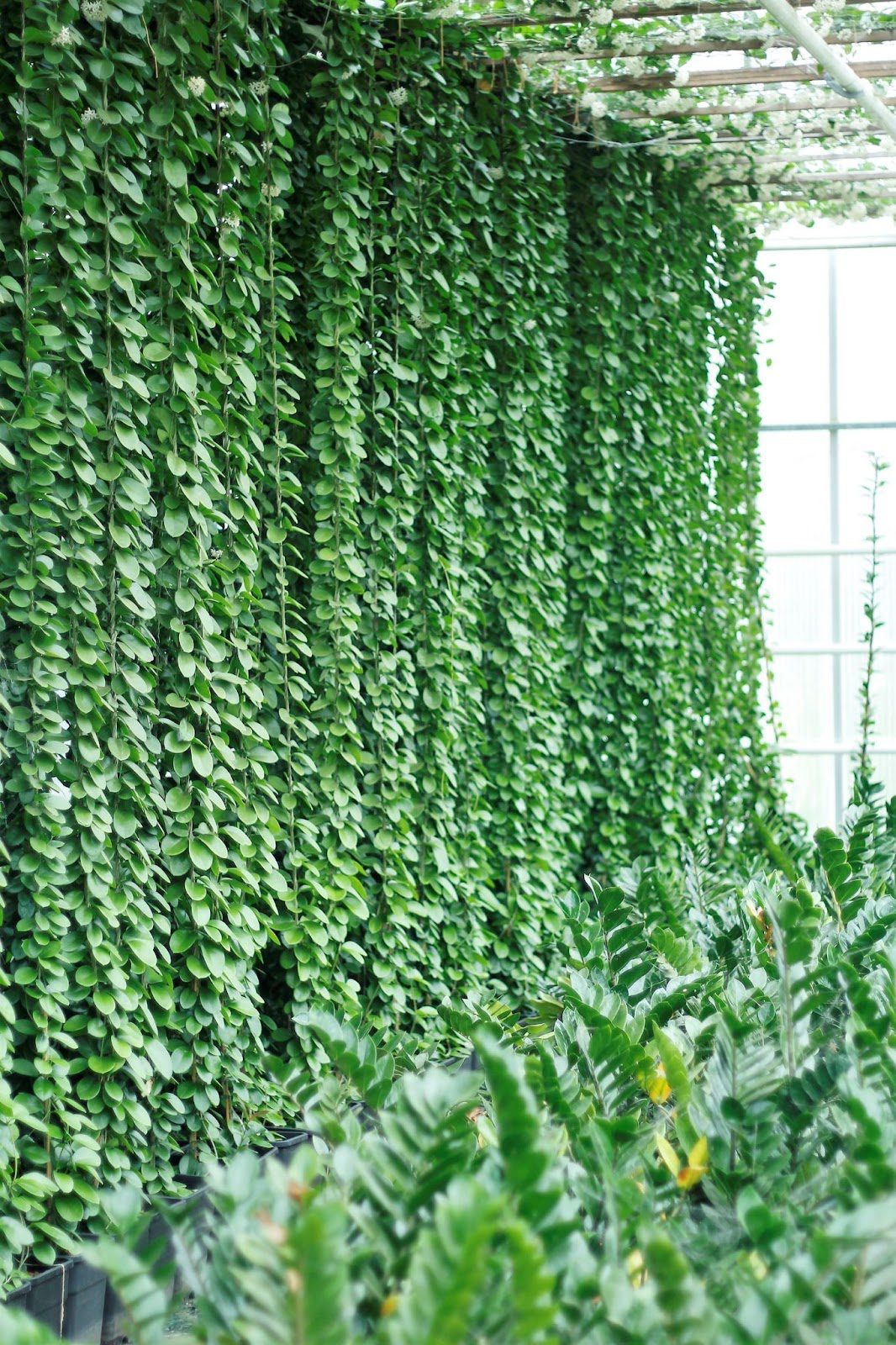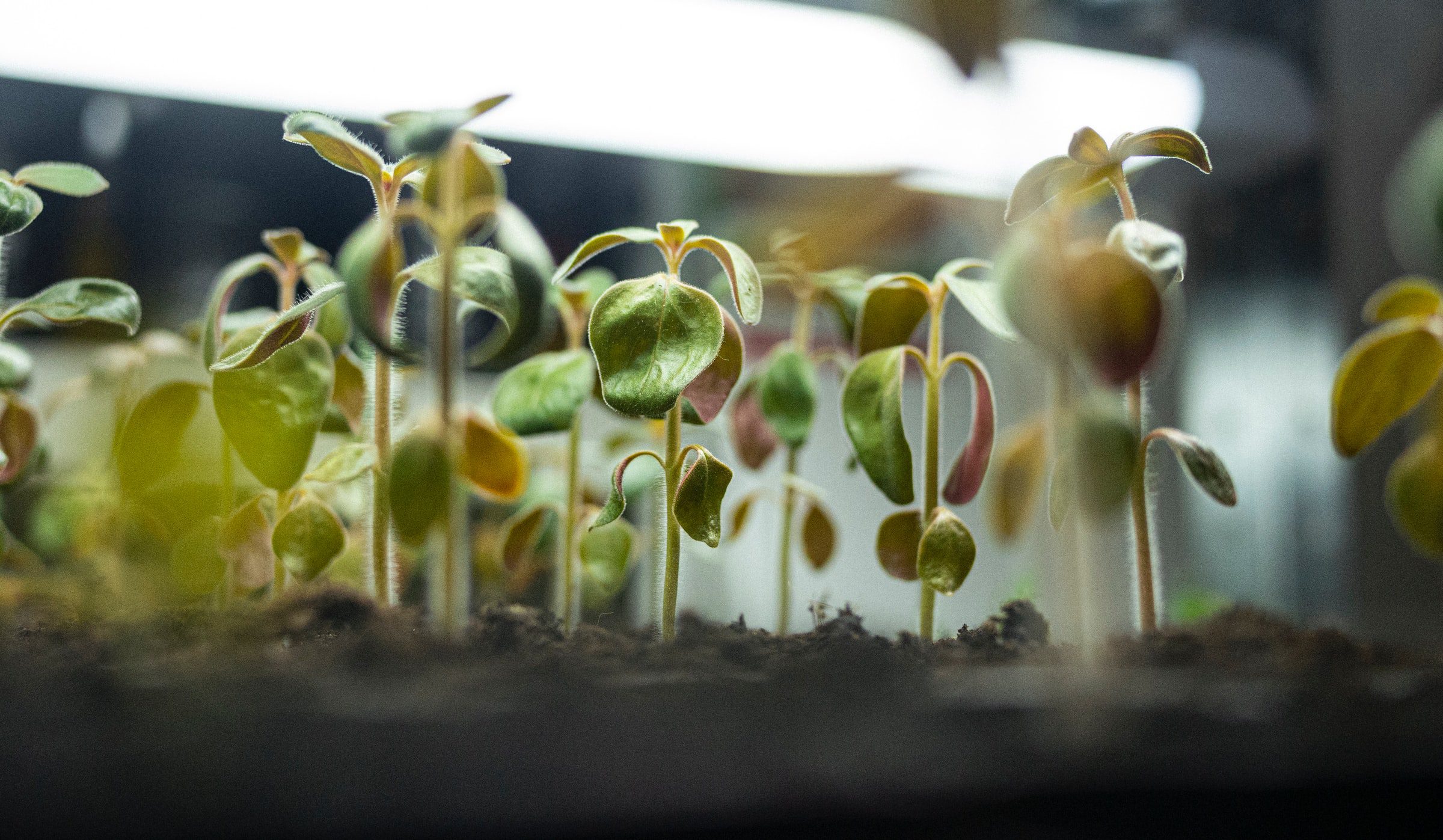Created by UbiQD, quantum dots are tiny synthetic particles that can be programmed to specific colors from the spectrum. Though the product has significant applications in electronics, where it is used to make more energy-efficient screens, the real future of quantum dots is in agriculture. There, the dots – often embedded into glass – convert sunlight specifically to the colors orange or red, each of which significantly boosts how well plants use light. The result is larger plants with stronger root systems, yielding larger numbers of fruit or vegetables. Quantum dots can be used in the greenhouse, vertical, and, perhaps most excitingly, in space.

The dots themselves are tiny: thousands of times smaller than the width of a human hair. That small size gives them massive flexibility to manipulate color.
They operate by changing colors based on wavelengths. By filtering out the colors that plants don’t need, quantum dots make plants grow more efficiently, larger, and faster.
The dots can be adjusted as the plant grows, zeroing in on exactly what light each plant needs for that stage of its lifecycle. In fact, in a recent study, the dots increased the size of romaine lettuce by more than 10 percent. More importantly, the dots do not require any energy to operate, need only a few materials, and are very simple to operate. The dots also cut down the number of water plants required to thrive. In the field of controlled environment agriculture, where plant science and environmental control are used to maximize plant yield and efficiency, quantum dots are the star of the show.
The dots’ application in space may one day allow plants to grow on the moon, other planets, or on space stations. In space, ultraviolet light is the dominant form. Quantum dots can convert this light into the light plants need to grow, challenging the assumption that plants simply need more light to grow. In fact, they simply need the correct kind of light to grow.
“[Plants] will grow to a foot tall,” said Gene Giacomelli, a University of Arizona Professor of Horticulture who helped study the dots. “If we create a way for people to survive on the moon or Mars, then I’m quite sure the plants [using light filtered by quantum dots] would thrive, grow and produce.”

Quantum dots have the potential to solve several sustainability issues as the Earth’s population grows. The dots could help feed astronauts in space over long periods of time, solving major concerns about how to nourish humans as they explore the solar system. Additionally, the dots may help cities become carbon neutral by reducing the amount of energy needed to create fresh, healthy food for vast urban populations. With an expected 2.3 billion more mouths to feed by 2050, finding low-carbon solutions is critical. The technology may allow small farms to produce more food, and for food to be sustainably grown in places we never thought possible.





